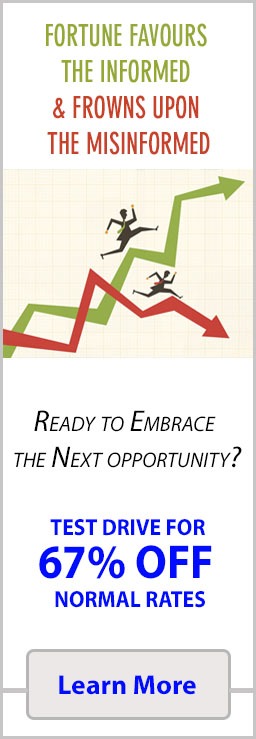Aggressive Trading Strategies: High Risk, Higher Reward—If You Know When to Strike
July 12, 2025
Aggressive trading isn’t dumb. It’s just rarely done with precision.
I’ve been there—sitting in front of screens, heart pounding as positions moved against me, that toxic cocktail of adrenaline and dread coursing through my veins. The market doesn’t care about your mortgage or your ego. It’s a cold machine that feeds on the unprepared.
But here’s what I learned after blowing up more accounts than I care to admit: aggression isn’t the villain—it’s the mirror. It shows who’s prepared and who’s just guessing, who’s hunting with purpose and who’s flailing in the dark.
The difference between traders who multiply wealth and those who vaporise it isn’t about being conservative versus aggressive. It’s about understanding that tactical aggression can exponentially grow capital only when it’s rooted in calm structure, not chaos seeking. The market rewards the predator, not the panic.
What Are Aggressive Trading Strategies?
Let’s get this straight. Aggressive trading isn’t just about lighting your cash on fire with leveraged options or scalping until your pupils dilate. It’s not chaos. It’s clarity with teeth.
You’re not gambling. You’re hunting with conviction sharpened to a blade. High leverage? Sure. Large positions relative to your stack? If the setup earns it. Compressed timeframes, hair-trigger exits, asymmetric bets? All valid—if they’re built on structure, not adrenaline.
Aggression is controlled force. You’re not waiting for confirmation from the crowd. You’re already in position before they wake up. Real example: a small-cap smashes through six-month resistance with volume tripled. That’s your green light. You size up, stop 2% below, and aim for 10% upside. 5:1 odds. No hesitation. No debate. You strike because the conditions are screaming, not because you’re bored.
That’s what real aggression looks like—deliberate, backed by edge, and cold as steel. The moment it becomes emotional? It’s over.
Why Most Traders Get Wrecked Trying to Be Aggressive
Because they’re not aggressive, they’re impulsive. There’s a difference—and the market exploits it ruthlessly.
The size is too big for weak setups. They chase after breakouts already halfway gone. They react, not act. What they call “confidence” is usually just desperation in disguise. And when does it backfire? They double down, trying to brute-force their way back to even. That’s not strategy—that’s survival instinct hijacked by ego.
This is where the market becomes a psychological war. You think you’re trading charts, but really, you’re trading your own shadow. Every weakness—impatience, fear, greed—gets amplified when you try to trade aggressively without discipline.
I’ve seen traders ride meme stocks into six-figure wins, only to lose it all in weeks because they mistook luck for skill. One moment, they’re gods. Next, they’re ghosts. That’s the cost of mistaking noise for signal. Of mistaking recklessness for edge.
The market has no sympathy. But it does keep receipts.
When Aggression Works: Timing Is the Weapon
Sun Tzu knew: never attack a fortified city. Hit when the wall is crumbling.
Post-capitulation reversals—when everyone’s puked out their positions and volume spikes on reversal candles. Clean breakouts with momentum confirmation—not chasing, but entering as the rocket ignites. Deep consolidation patterns are exploding on the catalyst news.
These aren’t random moments. There are structural vulnerabilities in market psychology. When fear peaks, aggression pays. When complacency reigns, it destroys.
Napoleon conquered Europe not through brute force alone, but through speed and surprise backed by meticulous preparation. Your trades should embody the same principle: strike fast, but only on ground you’ve studied.
Risk Controls That Make Aggression Possible
Here’s the unsexy truth: aggressive trading only works with ironclad rules.
Max loss per day: 3% of the account, period. Hit it? Screens off.
Kill switch after 2 failed trades: The market’s telling you something—listen.
Trade prep checklist: Entry, stop, target, and size calculated before touching the buy button.
Annie Duke understood this deeply—don’t let outcome bias fool you. A winning trade with a terrible process is more dangerous than a losing trade with sound logic. Good luck can mask bad habits until it can’t.
I keep a simple rule now: If I can’t explain the trade setup to a 10-year-old in one sentence, I don’t take it.
Personal Turnaround: From Chaos to Tactical Firepower
I know the spiral. Early on, I wasn’t trading—I was flailing. Every breakout looked like gold. Every dip screamed “buy.” I averaged down like a lunatic, thinking it was boldness. Lost 30% in one week and called it a lesson. It wasn’t a lesson. It was ego cosplaying as edge.
The shift didn’t come from a book. It came from bleeding. I started documenting every trade, not just the numbers, but the mental state behind them. Fear. FOMO. Arrogance. It was all there, plain as day. Once I saw the patterns, I burned them.
I stopped going all-in. Started scaling. I set loss limits that made me sick to follow. But I followed them because pain had rewired my threshold for bullshit.
Over time, the chaos hardened into precision. I didn’t get “safer.” I got sharper. More violent, but with purpose. I became the sniper—silent, still, waiting for the one clean shot. And when it came, I didn’t hesitate. I’ve doubled accounts in days on biotech catalysts. I’ve also sat in cash for three weeks straight. That’s discipline. That’s the edge.
Conclusion:
Aggression isn’t the enemy. Indiscipline is.
The best traders I know aren’t chill. They’re predators in disguise—quiet until the setup screams, then surgical. No hesitation. No mercy. They scale up when fear floods the room. They cut losses without apology. They know the difference between action and reaction, between conviction and compulsion.
This game doesn’t reward the brave or the scared. It rewards the trained. Aggressive trading isn’t a red flag—it’s a force multiplier when paired with control.
Strike like a predator. Move with intention. And never confuse recklessness with skill. Aggression works—if you’re worth the trigger pull.













